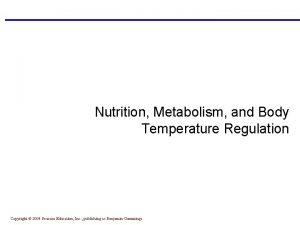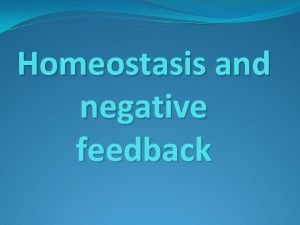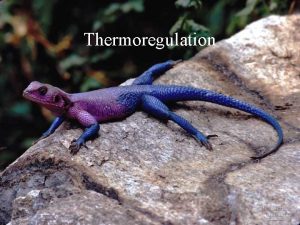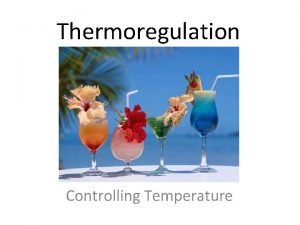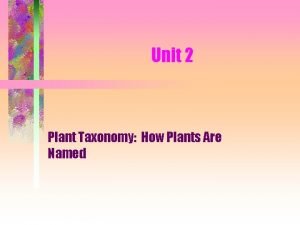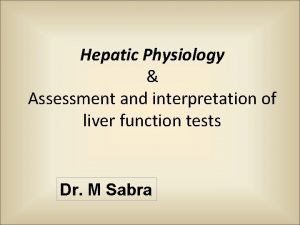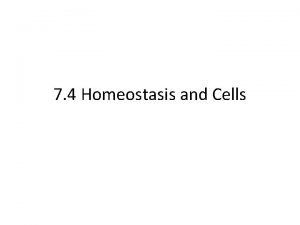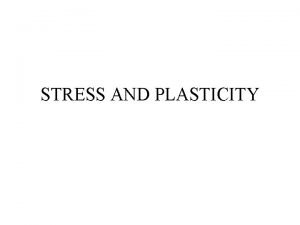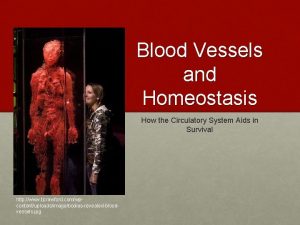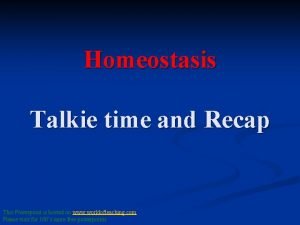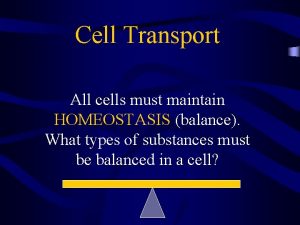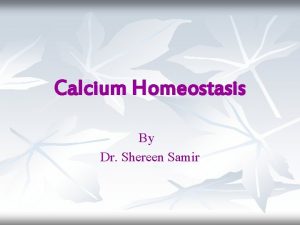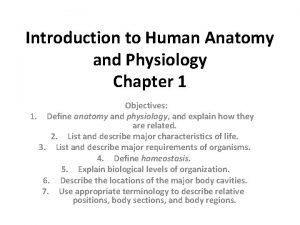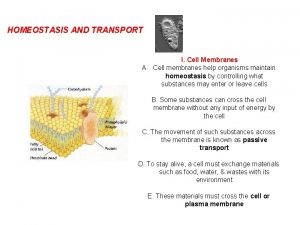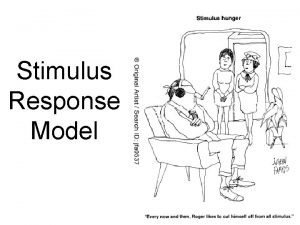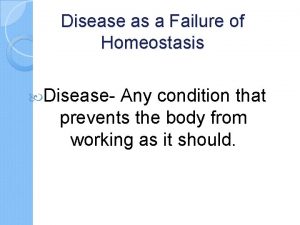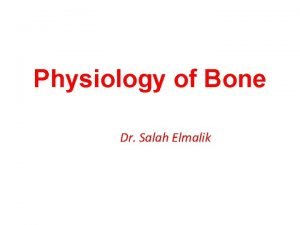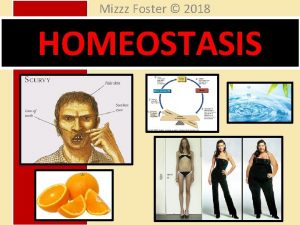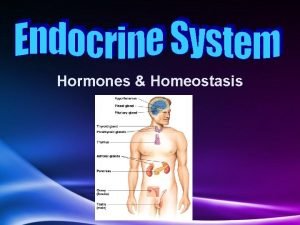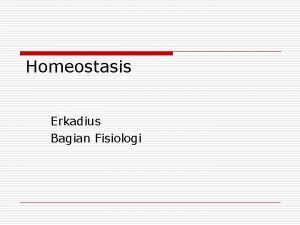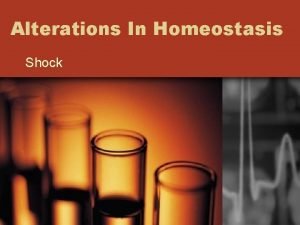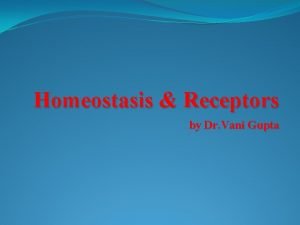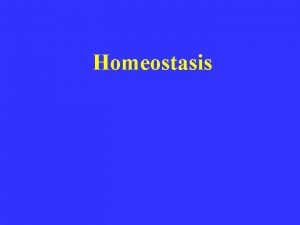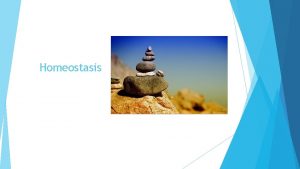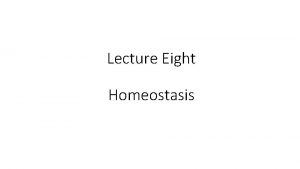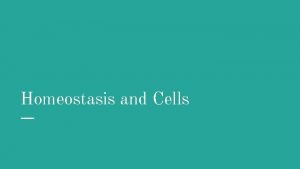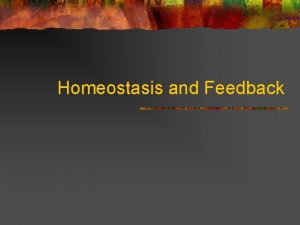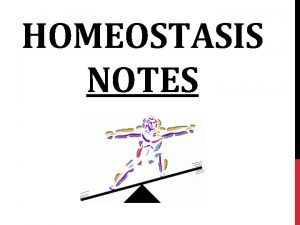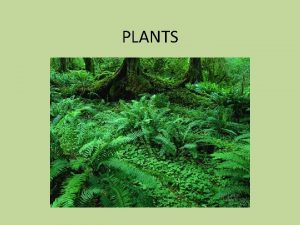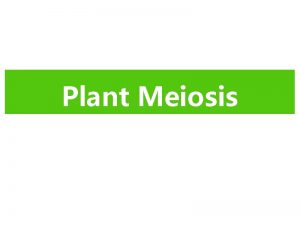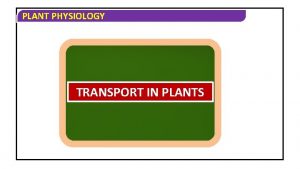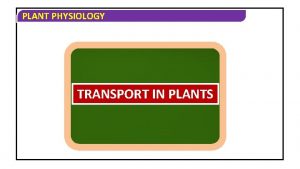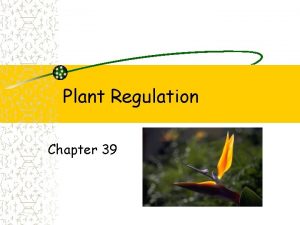Homeostasis in Plants Plant Regulation n n Regulation































- Slides: 31

Homeostasis in Plants

Plant Regulation n n Regulation and coordination systems in plants are much simpler than in animals Homeostatic regulation of plants seeks to: n n n Maintain an adequate uptake of water and nutrients form soil into leaves Control stomatal opening so that water loss is minimised and carbon dioxide is maximised When plants respond to environmental conditions such as high temperature or salinity, they are balancing several conflicting demands

Regulation of Extracellular Fluid n n n The composition of extracellular fluids is not precisely regulated in plants. Plants are fairly tolerant of changes in the solute concentration of the extracellular fluid providing the solute concentration is hypotonic to the solute concentration inside their cells. If the solute concentration of the extracellular fluid is hypertonic to the solute concentration of cytoplasm, water diffuses out of the cytoplasm, resulting in plasmolysis (shrinkage of the cytoplasm) and, potentially cell death.

Regulation of Extracellular Fluid

Gaseous Exchange n In vascular plants the rate of movement of water, carbon dioxide and oxygen between atmosphere and internal spaces is regulated by the degree of opening of stomata.

Stomata n n Stomata are generally abundant on the surfaces of leaves, more commonly on the underside. Stomatal pores in the epidermis are bounded by two highly specialised guard cells.

Guard Cells n Guard cells have three structural features which explain their function: n n n They are joined at their ends in pairs Their cell walls are thicker on the side nearest to the stomatal pore Bands of inelastic cellulose fibres run around each cell

Regulating Stomata n n Stomal movement is the result of changes in the turgor of the guard cells. If water flows into the guard cells by osmosis, their turgor increases and they expand. The relatively inelastic inner wall makes them bend and draw away from each other. This opens the pore.

Why Regulate Stomata

Stomatal Opening 1. Potassium ions move into the vacuoles. 2. Water moves into the vacuoles, following potassium ions. 3. The guard cells expand. 4. The stoma opens.

Stomatal Closing 1. Potassium ions move out of the vacuole and out of the cells. 2. Water moves out of the vacuoles, following potassium ions. 3. The guard cells shrink in size. 4. The stoma closes.

Communication in Plants n Communication between cells in different parts of a plant is required to coordinate n n the direction and timing of growth water balance other plant responses Plants have no nervous system so internal coordination is controlled by hormones

Hormonal Responses n n n Responses in plants are simple – no equivalent to endocrine system of animals. Hormone-producing cells in plants are not organised into specialized tissues such as glands. Hormones generally produced by the cells receiving the appropriate environmental stimulus. Responses are slower than in animals Hormones are distributed throughout the plant in a variety of ways: n n n Cell to cell Through transport pathways (usually phloem) Through air

Detecting Stimuli n n n Plants don’t monitor their internal environment as animals do because there is no distinct difference between their extracellular fluids and the external environment. Plants don’t have specialised receptors like those in animals Stimuli causes a sensitive cell to produce a particular hormone, which then travels relatively slowly, usually through the phloem, to reach responsive tissues

Detecting Stimuli to which plants respond include: Physical factors: n Direction and wavelength of light, day/night length (photoperiod), gravity, temperature, touch Chemical factors: n Water, carbon dioxide and specific chemicals (e. g. ethylene gas – ripens fruit) n Directionality is often an important aspect in plant sensing and responding.

Plant responses n n n Plants respond to the physical parameters of their environment in different ways: Phototropism – growth in response to light Geotropism – growth in response to gravity. n n n n Negative geotropism – shoot grows up Positive geothropism – roots grow down Thigomotropism – tendency for climbing plants to wrap themselves around a support Heliotropism – tendency for some plants to follow the sun during the course of the day Photoperiodism – respond to changing day-length – this is the basis for seasonal changes in plants Vernalization – respond to periods of cold When plants grow towards a stimulus it is referred to as a positive tropism, and when plants grow away from a stimulus it is referred to as a negative tropism.

What else do plant hormones control? n n n Apical dominance – the inhibition of lateral branches Ripening of fruit – conversion of starches to sugars Abscission – shedding of leaves and fruit

Summary of the properties of plant hormones HORMONE WHERE PRODUCED EFFECTIVE SITE ACTION VISIBLE EFFECT Auxins Shoot tip (meristem) Growing region of shoot Cells elongated under turgor pressure Tip bends towards light Gibberellin Fruits, seeds, growing buds, elongating stems Whole plant Growth of cells Growth of plant, germination of seeds, flowering, fruit enlargement Cytokinins Roots and developing fruits Branch and leaf buds Antagonises auxins on leaf buds, promotes cell division and differentiation Growth of lateral branches Abscisic acid Chloroplasts Gene expression in nuclei Growth inhibition Seed dormancy, vernalisation, drought tolerance Ethylene Ripening fruits and other parts of plant Cellular metabolism Fruit ripening, leaf drop Increased sugar in fruit, leaf and fruit drop


Auxins – The Good n n Some auxins are used to stimulate root development in stem cuttings and induce the formation of lateral roots. Spraying auxins can: n n prevent natural pollination, produce seedless vegetables such as tomatoes and cucumbers prevent fruit fall by delaying abscission induce flowering in the pineapple family

Auxins – The Bad n n Are both stimulators and inhibitors of growth. Synthetic auxin-like chemicals 2, 4 -D and 2, 4, 5 -T were used as herbicides. (both contain trace levels of dioxin as a contaminant) The combination of these two chemicals was refered to as Agent Orange during the Vietnam war and was used as a defoliant as it causes such rapid, disproportionate growth that leaves of treated plants shrivelled and died. At the correct concentrations these chemicals are selective for broad-leaved weeds and do not kill grasses.

IAA – An example of an auxin n n n Auxins are produced by the growing tips of plants. Their site of production was first identified in germinating grass seeds. It was found that the first leaves (coleoptiles) of these germinating seeds did not grow if their tips were removed. IAA is responsible for apical dominance. Apical dominance exists when lateral buds on the stem close to the apex of a plant do not develop while the growing tip at the apex of a plant grows and develops. Development of the lateral buds is inhibited as a result of the action of IAA that is produced by the terminal bud at the apex of the plant. The IAA moves down the stem through the phloem and exerts an inhibitory effect. When the bud at the apex is nipped off, the source of IAA is removed and lateral buds lower down on the stem begin to develop. Auxins are involved in the bending of plant shoots and roots in response to light and gravity.

IAA – An example of an auxin n Auxins are water soluble chemicals produced in the tip of the plant which promote elongation of the cells below.

Auxins cause bending of plants n n Auxin is evenly distributed throughout the tip and the coleoptile grows straight up. If light is concentrated to one side of a coleoptile then auxin moves away from the light source to the darker side of the tip and becomes more concentrated in the cells in that region. The increased concentration of auxin in these cells means they grow more quickly than cells nearer the light. The uneven growth of cells results in bending of the coleoptile.

Auxins cause bending of plants

Gibberellins n n n Can speed germination in spring by overcoming seed dormancy and the requirement for light. Can cause formation of giant flowers Treating seedless grapes with gibberellin produces larger juicer fruit. Synthetic gibberellins may be used as herbicides by producing abnormal growth of stems without adequate root growth, or by stopping cell division. Can be used to prevent root growth in potatoes, thereby preserving the crop

Abscisic Acid (ABA) n n n n Fruit that is about to fall from a plant, and dormant buds, both contain high levels of abscisic acid. The separation of a plant part such as a leaf or fruit from the parent plant is called abscission. Before a leaf falls, a special zone called the abscission zone forms at the base of the leaf petiole or stalk. This zone is a special layer of cells which forms a barrier between the leaf and the plant which marks where the leaf will break away from the plant. The cells also form a protective layer on the plant and inhibit entry of parasites. The presence of auxins in young leaves inhibits abscission. As a leaf ages on a deciduous plant, a number of changes occur, including an increase in production of abscisic acid. It was once thought that abscisic acid was responsible for the formation of the abscission layer, hence the similarity in names. Recent work indicates that abscisic acid does not have this role. ABA inhibits growth and also influences stomatal closure.

How does ABA work? n n ABA the potential to help crop plants cope with drought however it is expensive to produce and is rapidly broken down by plants. Xylem water, which contains ABA produced in roots is drawn through stomata by transpiration. As transpiration increases, levels of ABA increase, causing the stomata to partially close. This reduces transpiration, which causes ABA levels to drop and stomata to open again. Negative Feedback System!!!

Intervening in plant growth n Synthetic hormones are used by horticulturists and home gardeners to: n n n Encourage root growth on cuttings Discourage potatoes from sprouting Make flowers set fruit Delay fruit drop Speed up ripening Sometimes as herbicides

Tissue Culture: Growing “cloned” plants n n n When large numbers of plants with a particular genetic make-up or of particular economic importance are required, growth from cuttings or even from a small group of cells is carried out in the laboratory using special techniques. The technique of tissue culture (or cloning) may be used to obtain large numbers of plants in a relatively short time. Cloned plants are genetically identical to the plant from which the original cells were taken. When small groups of unspecialised cells are used, they are sterilised and grown on agar in a test tube or other container. Each group is called a callus. The hormone cytokinin is added. High levels of cytokinin combined with relatively low levels of auxin results in growth of shoots. The shoots on each callus are then treated with auxin, leading to a relatively high level of auxin and a relatively low level of cytokinin compared with before. This results in the formation of roots. Each callus, which started as a small group of cells, gives rise to a complete new plant. By this technique many genetically identical plants can be quickly produced from the one parent plant.

Plant hormones are used to promote growth when new plants are cloned from unspecialised cells.
 Bioflix activity homeostasis low blood glucose
Bioflix activity homeostasis low blood glucose Bioflix activity homeostasis hormones and homeostasis
Bioflix activity homeostasis hormones and homeostasis Temperature regulation
Temperature regulation Negative and positive feedback mechanism of homeostasis
Negative and positive feedback mechanism of homeostasis Homeostasis mechanisms for regulation of body temperature
Homeostasis mechanisms for regulation of body temperature Body temperature maintenance
Body temperature maintenance Classify the non flowering plants with examples
Classify the non flowering plants with examples C3 plants vs c4 plants
C3 plants vs c4 plants What non vascular plants
What non vascular plants Nonvascular plants reproduction
Nonvascular plants reproduction How plants are named
How plants are named Objective of plant breeding
Objective of plant breeding Albugo eye
Albugo eye Plant breeding for disease resistance
Plant breeding for disease resistance Plant introduction in plant breeding
Plant introduction in plant breeding Tronsmo plant pathology and plant diseases download
Tronsmo plant pathology and plant diseases download Tronsmo plant pathology and plant diseases download
Tronsmo plant pathology and plant diseases download Cholesterol homeostasis
Cholesterol homeostasis What do unicellular organisms do to maintain homeostasis
What do unicellular organisms do to maintain homeostasis Allostasis vs homeostasis
Allostasis vs homeostasis Blood vessels homeostasis
Blood vessels homeostasis Homeostasis powerpoint
Homeostasis powerpoint Homeostasis and cell transport
Homeostasis and cell transport What is homeostasis
What is homeostasis Calcium regulation
Calcium regulation Anatomical position def
Anatomical position def How do cells maintain homeostasis
How do cells maintain homeostasis Stimulus and response difference
Stimulus and response difference Example of homeostasis
Example of homeostasis Give an example of homeostasis.
Give an example of homeostasis. Failure of homeostasis
Failure of homeostasis Homeostasis blood calcium level
Homeostasis blood calcium level


